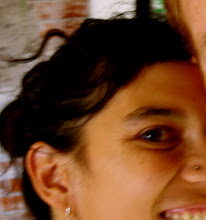I have had the time to experiment and to learn from Tressa Yellig, the amazing creator of Salt, Fire and Time. Tressa follows a style of cooking promoted by the Weston A. Price foundation and made accessible by the Nourishing Traditions cookbook. It focusses on nutrient dense foods, rich with healthy animal fats and made digestible through fermentation. I have been inspired by her boldness and her integrity as a person and a chef.
And so when a quart of farm fresh organic milk recently made its way into my hands I decided to venture forth into a world of edible alchemy. It is not in my personality to understand the physics or chemistry behind these simple creations, instead I accept it as magic.....delicious, accessible magic.
Milk = Yogurt
Yogurt = Cream Cheese and Whey
Whey = Sauerkraut
What a tidy little sequence of events, wouldn't you say? I could go to the store and buy each of these items quite easily, but I get such pleasure from having the building blocks at my fingertips. I know that I save money, avoid packaging, and have complete control over what goes into my food. And like I said...its magic and its a hoot.
Here's the first round. I got this yogurt recipe from Sandor Ellix Katz's Wild Fermentation book, an incredible and informative read.
Heat a quart of organic milk in a heavy bottomed pot until the temperature reaches 180 degrees, stirring gently the whole time. If you don't have a thermometer look for the small bubbles starting to foam around the edges.
Turn the heat off and allow to cool till you can put your finger in the milk without flinching. (110 degrees).
At this point add only a tablespoon of organic yogurt that has live cultures. This will be your starter culture but next time you make yogurt you can use a tablespoon from the previous batch. Mix the starter in until its dissolved in the milk. Pour into a pre-heated quart jar and close tightly.
In the meantime you need to devise a way to tuck your jar of yogurt-to-be into a warm and cozy spot for the night. You could wrap the warm jar in towels and set the bundle in a toasty spot, but my favorite method is to fill a couple hot water bottles and snug them into a small insulated cooler.
Our house runs cold this time of year and I often struggle with finding a consistently warm spot for my ferments and for my toes. I have to say the hot water bottles given to me by my British nana are well cuddled around here. In fact, for full disclosure, after I wrote that last sentence I got so inspired that I went and put the kettle on to fill up my hot water bottle for a bit of blogging warmth.
Soon enough, out comes yummy warm yogurt, sometimes with a thick layer of cream on top. You know the rest.....





When I make my yogurt I use my special magic yogurt box. A different low tech version of the yogurt maker, I picked up 2 beer boxes, cut one in half and put it inside of the 2nd box and insulated both boxes with straw. i think i want to use the hot water bottle technique to add more heat for added goodness. i like it! I've already made my weekly batch, but i'm looking forward to the h20 bottles.
ReplyDelete